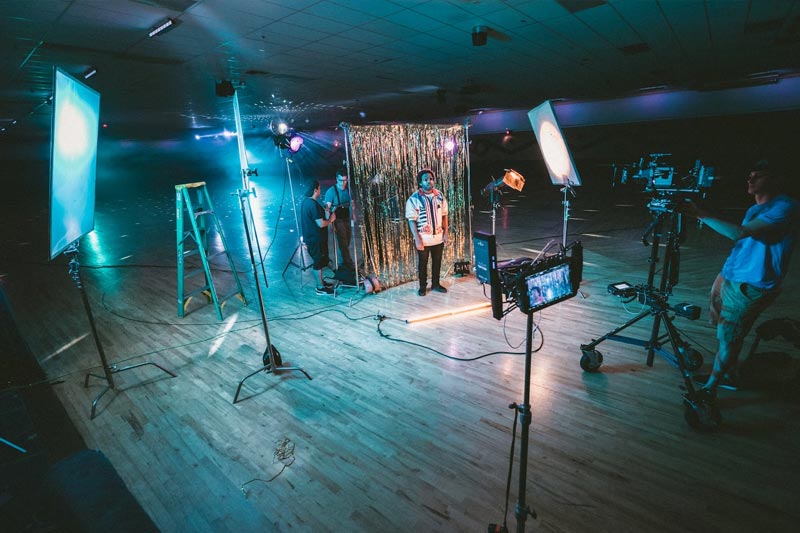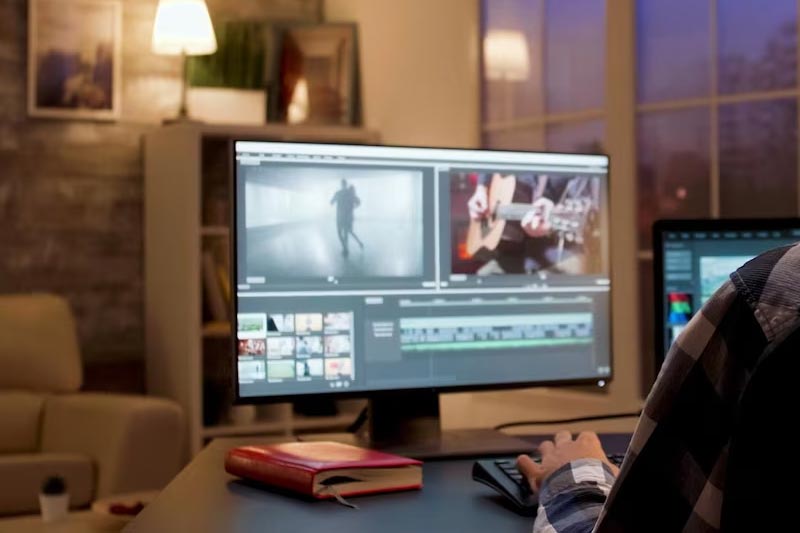
The Art of Commercial Storytelling: How to Create Videos That Sell
In today’s world, commercial video production has become an essential aspect of any business’s marketing strategy. A video is a potent tool to help you engage with your target audience, increase brand awareness, and drive sales. However, producing high-quality commercial videos can be daunting, especially if you are new to the process. This article will guide commercial video production, including tips and tricks for compelling marketing videos.
What is Video Production?
Video Production Services is a captivating process that encompasses creating, recording, and editing visual content for various platforms such as television, digital channels, and social media. It involves a multi-faceted range of talents and expertise within the industry, including scriptwriting, directing, cinematography, editing, and visual effects. Essentially, a video production company in Hartford, CT, involves bringing stories to life through a seamless fusion of dynamic visuals and impactful audio, aiming to evoke emotions and convey meaningful messages to its target audience.
With the remarkable advancements in technology, equipment, and editing software, video production services have significantly evolved, enabling professionals to create highly engaging and immersive content that captivates viewers across myriad platforms.
Pre-production Phase
The pre-production phase is where the planning and preparation for the shoot take place. This phase is crucial because it lays the foundation for the rest of the production process.
Defining the target audience
Defining the target audience is one of the most critical steps in commercial video production. Creating a video that will resonate with them is impossible without a clear understanding of who you’re trying to reach. Here are some steps to help you define your target audience:
- Conduct market research
Start by conducting market research to identify your potential customers. This research should include demographic information such as age, gender, income, and location.
- Identify your customer’s needs and preferences
Once you’ve identified your potential customers, you must understand their needs and preferences. What problems are they trying to solve, and what solutions are they looking for? What are their interests and values?
- Create buyer personas
Create buyer personas and fictional representations of your ideal customers based on your market research. These personas should include demographics, goals, pain points, and buying behaviors.
- Tailor your message and creative concept.
With your buyer personas in mind, tailor your message and creative concept to appeal to your target audience. For example, use language and visuals that resonate with them, and address their specific pain points and needs.
By defining your target audience, you can create a video that speaks directly to them, increasing the chances that they will engage with your brand and ultimately become customers. Remember that your target audience may evolve, so you must periodically revisit your market research and buyer personas to ensure you’re still on track. Hiring a reputable video production company in Hartford, CT, can help you stay ahead of the game.
Developing a creative concept

Developing a creative concept is a crucial part of commercial video production. It’s turning your message and ideas into a compelling visual story that resonates with your target audience. Here are some steps to help you develop a creative concept:
- Start with your message
Your creative concept should be based on your message and the main idea or theme you want to communicate in your video. So, first, identify the key points you want to convey and how you want to make your audience feel.
- Brainstorm ideas
Once you have a clear message, start brainstorming ideas for how to bring it to life visually. Think about the story you want to tell and how you can use visuals to convey your message compellingly. Consider different angles, settings, and characters that could help illustrate your message. If you’re working with your local Video Production Services, make sure to communicate this clearly with them.
- Create a storyboard
A storyboard is a visual representation of your video, including sketches or illustrations of each scene. It’s a valuable tool for planning your shots and ensuring your creative concept flows logically from one scene to the next.
- Choose the right visuals and music
Choosing the right visuals and music is critical to the success of your creative concept. Use engaging, attention-grabbing visuals and music that complement your video’s tone and mood.
- Refine your concept
Once you have a rough concept in place, take the time to refine it. Ensure it aligns with your brand values and messaging and will resonate with your target audience. Finally, test your concept with focus groups or colleagues to get feedback and make improvements.
Following these steps, you can develop a creative concept that tells a compelling visual story and effectively communicates your message to your target audience. Remember that your creative concept should be tailored to your brand and audience and that it should be engaging and memorable to leave a lasting impression.
Choosing the right equipment and tools
Writing the script is a critical component of commercial video production, as it lays out the dialogue and action that will guide the visual storytelling of the video. Here are some tips to help you write a compelling script:
- Keep it concise
Your script should be concise and to the point. Avoid using overly complex language or unnecessary dialogue that may confuse your audience. Instead, focus on communicating your message clearly and straightforwardly.
- Start with a strong opening
The first few seconds of your video are crucial for grabbing your audience’s attention. So start your script with a strong opening that immediately captures their interest and sets the tone for the rest of the video.
- Use storytelling techniques
One effective way to engage your audience is by using storytelling techniques in your script. This can include using anecdotes, metaphors, or other literary devices that help illustrate your message and create an emotional connection with your audience.
- Consider the visuals
When writing your script, keep in mind the visuals that will accompany your dialogue. Use descriptive language to help your audience visualize the scenes and characters in the video and ensure that the dialogue aligns with the action on screen.
- Include a call-to-action (CTA)
This encourages viewers to take a specific action, such as visiting your website or purchasing your product. Include a clear and concise CTA in your script that aligns with your video goals.
- Edit and revise
Once you’ve written your script, take the time to edit and revise it. Read it out loud to ensure that it flows smoothly and makes sense. Ask colleagues or trusted advisors to provide feedback and make suggestions for improvement.
Production Phase

Once you have a clear creative concept and script, the video production phase can begin. If you are working with your local video production company in Hartford, CT, make sure to communicate your video goals and expectations. Take some time to review the video equipment used for filming, as well as any other tools that will be utilized during the production process. This is also a good time to go over any potential video edits or special effects you would like included in your video. Finally, set a timeline and budget for the video’s completion.
Post-Production Phase
Once filming is completed, it’s time to move on to post-production. This phase includes video editing, color correction, and sound design. The video editor will take the raw footage from the video shoot and create an engaging video narrative using techniques such as transitions, titling, and music selection. Additionally, sound designers will work to ensure that the audio components of the video are balanced and properly mixed for optimal sound quality.
Distribution Phase
Once your commercial video is complete, it’s time to distribute it. This phase involves:
- Choosing the right channels. You can distribute your commercial video through many channels, including social media, email marketing, and paid advertising. First, you must choose the proper channels to reach your target audience effectively.
- Creating a distribution strategy. Creating a distribution strategy involves determining the timing and frequency of your video release and the budget you will allocate to each channel.
- Measuring success. To measure the success of your commercial video, you need to track metrics such as views, engagement, and conversions. This information can help you to refine your strategy and improve future videos.
Conclusion
Commercial video production is a complex process, but by following these tips and tricks, you can create compelling videos that engage your target audience and drive sales. Whether you work with a video production company in Hartford, CT, or produce your videos in-house, remember the importance of planning, preparation, and understanding your audience. With the right approach, your commercial videos can be a powerful tool for growing your business.
